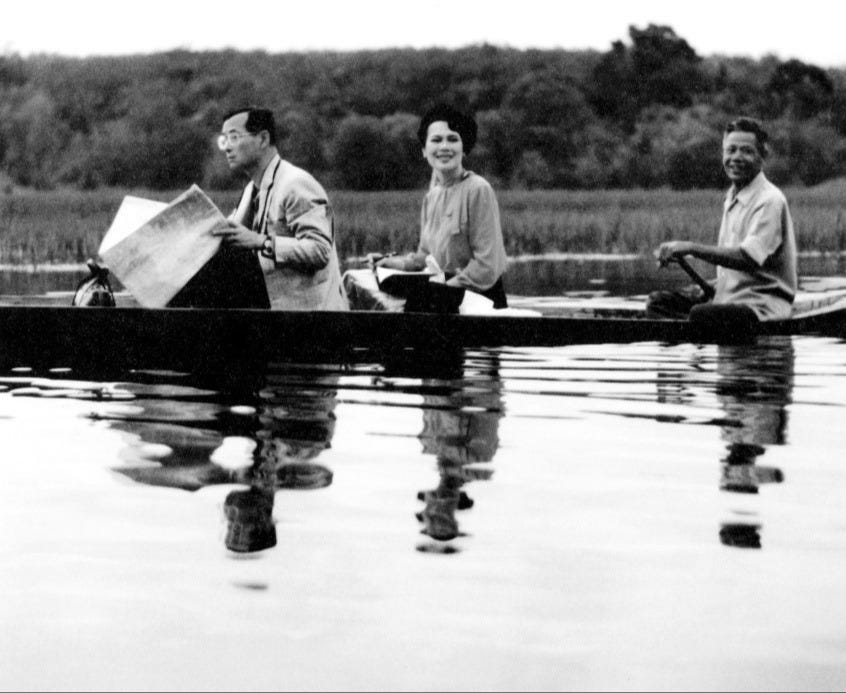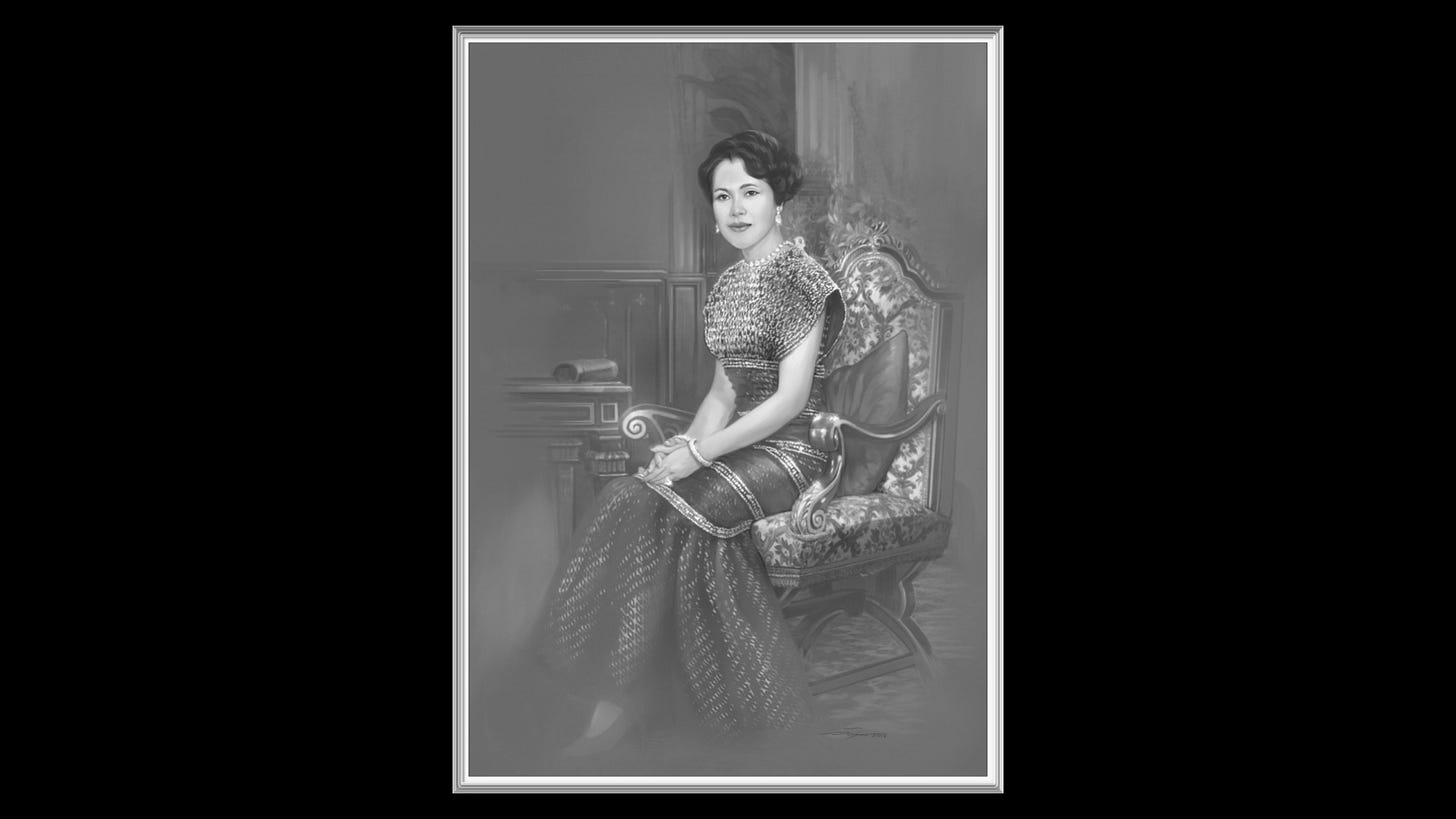"She Is My Smile"
In memory of Her Majesty Queen Sirikit The Queen Mother
I became Queen at the age of 17. I served His Majesty the King, and got to go out and help the people. But I never felt tired of it. I am happy every time I am among the people. — Her Majesty Queen Sirikit on August 11, 2004
On October 24, 2025, Her Majesty Queen Sirikit The Queen Mother passed away at the age of 93.
His Majesty King Bhumibol Adulyadej, known for his serious persona, was once asked by a journalist why he does not usually smile. Gesturing to Queen Sirikit, he said: “She is my smile.” The King and Queen stood side by side through a reign that transformed Thailand in every dimension. Another foreign journalist once asked King Bhumibol about his thoughts on whether Thailand was winning against communist insurgents. “We are not fighting against people,” the King replied. “We are fighting against hunger.” He pointed out that if peoples’ livelihoods improved, the communists “would also have a better life.” This goal — to better the lives of all the people — became a joint mission for both King and Queen.
When the King went on countless trips to remote areas, the Queen was there with him. Queen Sirikit also led her own royal development projects. “The King is water and I will be the forest,” Queen Sirikit once said (alluding to the King’s interest in water-related projects). Reforestation was her priority. She launched several projects that supported reforestation of degraded land and harmonious coexistence with nature. In healthcare, she supported the establishment of royal medical units which traveled to distant areas of the country.

One common thread through her developmental efforts was her special interest in the most vulnerable groups in society. She supported the building of schools for hill tribes in Chiang Mai. When observing a refugee camp along the Cambodian border, she asked: “How can I reject them?” The Ratchakarun Center of the Thai Red Cross on the border was the result of her subsequent efforts to care for Thailand’s fleeing neighbors.
Queen Sirikit was also someone who understood the creative economy and soft power before either concept was popular. Her sense of fashion was renowned, and she became an ambassador for the use of Thai silk. Her efforts in this area extended beyond just her personal taste. She established a foundation to promote supplementary occupations related to handicrafts, which now has three hundred centers nationwide. Indeed, her understanding of the need for creative skills training was ahead of its time. As Pongprom Yamarat once wrote, “The Thai textiles pioneered by Queen Sirikit was not just pretty fashion. It was the creation of a process of conservation, research, development, and vocational building that was successful and sustainable.”
Queen Sirikit’s birthday has been celebrated as Mother’s Day for decades in Thailand, and she had become a mother figure to an entire nation. Indeed, few remember a time before she became Queen. Just as King Bhumibol had been Thailand’s longest-reigning monarch, she was also the longest-serving Queen Consort. Over several decades, Queen Sirikit indelibly shaped the fabric of the country.
The writer Win Lyowarin compared Queen Sirikit to King Bhumibol’s “shadow” who always stood by his side for seventy years. “The image of the Queen working with the King, traveling through the land, is a picture that all Thais in the past are familiar with.” But as times change, he wrote:
…many good things and many beautiful images disappear into the layers of time.
We often forget the good things of the past, because it seems like there are so many bad things today, until we forget that once upon a time these good things happened in Thailand.
If we Thais remember at least a small portion of these good things, we may feel hope that we can solve Thailand’s problems, as King Rama IX and his “shadow” believed.
It is in that spirit that we remember and commemorate the life of Her Majesty Queen Sirikit and her legacy in Thailand. Her compassion and vision will live on in the hearts of Thais.


